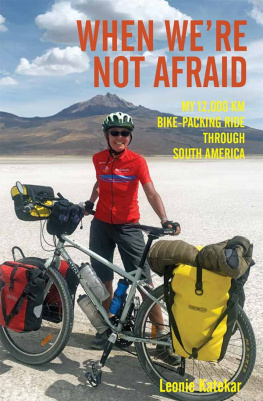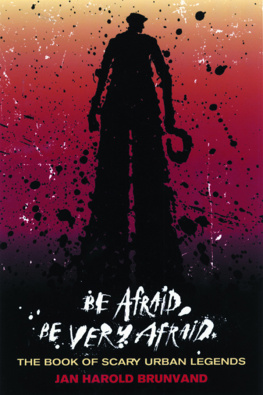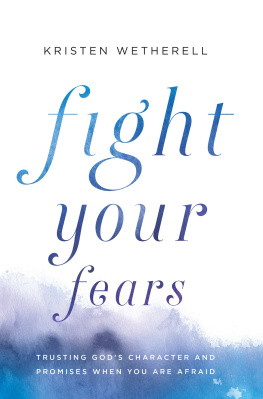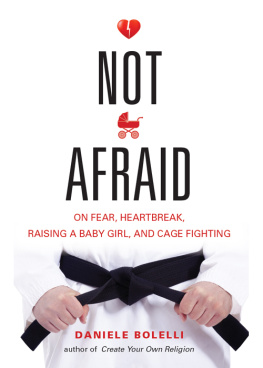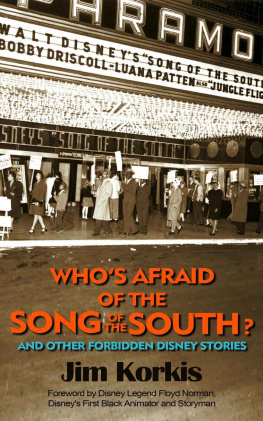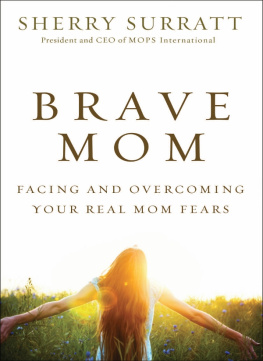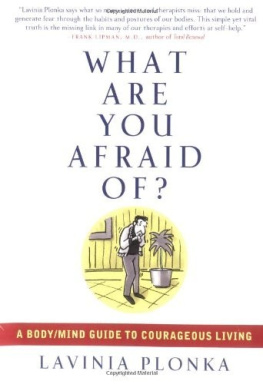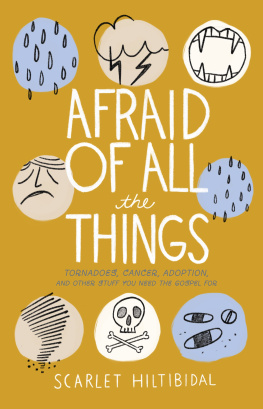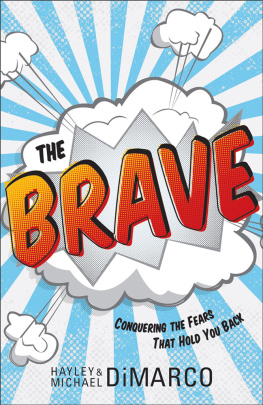TABLE OF CONTENTS


Published by Melbourne Books
Level 9, 100 Collins Street,
Melbourne, VIC 3000
Australia
www.melbournebooks.com.au
Copyright Leonie Katekar 2022
All rights reserved. No part of this publication may be reproduced, stored in a retrieval system, or transmitted in any form or any means electronic, mechanical, photocopying, recording or otherwise without the prior permission of the publisher.
Title: When Were Not Afraid: My 12,000 km bike-packing ride through South America
Authors: Leonie Katekar with Gregory Hill
eISBN: 9781877096266

Front cover image:
Cycling across the 10,000 square kilometre Bolivian salt plain, Salar de Uyuni, at 3600m.
Back cover image:
The most incredible Tres Lagos. A simple unguided day-walk from El Chalten.
My loved ones lost Mum, Dad, Ann, John and Gypsy.
Leonie
INTRODUCTION
This story begins in the 2010s when I was living in Darwin, raising my four children and holding down a responsible and rewarding position in Indigenous Health. I was emotionally and psychologically tired and overextended. I didnt know who I was or where I was going and there wasnt much in life that was working for me.
The years continued to pass, I turned fifty, and by 2016, although I had my children and my job, I didnt feel satisfied. I felt something was missing. My two adult sons were studying at university in Melbourne and I decided to join them. So, after a divorce that nearly broke my heart, and years of feeling lost and disenchanted, I left my job and moved to Melbourne.
Once there I couldnt get any job that compared to my Darwin Indigenous Health position, and I realised my children currently aged between sixteen and twenty-two were quickly becoming independent. My state of mind moved from lost to depressed and anxious, and one of isolation.
Everything in my life looked good from the outside. But on the inside I was in deep despair. Life had lost all sense of joy. I was laughing and smiling and wining and dining, and working and succeeding in my life in Melbourne. But I felt little, couldnt concentrate on much. I would start books but only get to page three before I felt disengaged and agitated. I could watch the odd movie but would get quickly bored with television. I could not sustain an interest in anything much at all. I had lost my identity, my self-confidence, my joy.
I dont see my life as being easier or harder that anyone elses. We all have our own invisible tragedies. In fact, in so many ways I think some of us women in particular have very similar struggles in our lives. That similarity may be expressed in one sentence: grow up, get married, raise children, work professionally or not, be resilient. I needed more.
Something had to change.
It did. A year after returning to Melbourne I became captivated with planning a long bike-riding journey a trip that would take me so far away from the world and life I had known that perhaps it would initiate within me some of the change and wisdom I was very much in need of.
So, at the age of fifty-five, I began a journey from Central America to the southernmost point of South America. I believed I could make it, but I wasnt sure. What I did know is that if I were to have any chance at all I would need to be flexible, adaptable, and rely on myself only as I would be travelling alone.
This book is the story of my adventure and what it did for me. I had been afraid to step away from my past and from the security of what I have always known, to leap into an unknown future. Then the possibility of the bike ride came into my life. It would be almost impossible for me to do this ride but there was nothing else to hold onto. This became a fear I had to deal with. It meant letting go of my previous understanding of myself, and exploring who I am and what I can do and be in the future.
For me it has been important to do this journey alone with no-one whispering in my ear, to do it in an unfamiliar environment, and to do it in a world that speaks a language I was not familiar with.
* * *
Then there was a phone call. In 2016, I moved to Melbourne and my friend Angie, who was still in Darwin, enlightened me with some interesting information.
You can travel halfway around the world, from Alaska to Antarctica, with an adventure travel company, if you have a year to spare and over US $75,000.
We had a bit of a laugh about this, and both being cyclists, we also laughed about possibly doing it by bike! Angie said she couldnt consider it for health reasons but it never left my mind.
I emailed all my old cycling friends in Darwin to see if anyone would do it with me; if not all of it, then some of it? But no-one was even curious. Not to be put off, I started talking about it with my other cycling buddies in Melbourne. Then, would you believe it, I found interest from a couple who had recently started joining me and my cycling friends on a Sunday: Frank had said he would cycle with me, and Barbara would drive the support vehicle.
I was very excited. Something just snapped and it was like, yeah, Im going to do it!
Frank and I would go on regular 90-kilometre bike rides together on weekends. We bought matching bikes and I started learning Spanish. I developed an extensive spreadsheet looking at daily kilometres and stopping points. We would all contribute to the planning and I became not just super excited, but engrossed.
We decided we would ride from Alaska to Antarctica. As part of our preparation, we booked a two-week cycling trip to New Zealand. The three of us would hire a campervan and take our new bikes and be together as if it wasnt just preparation, but the main trip itself. This would give us ideas about the daily routine that we might need to forge: what kind of vehicle we would be most comfortable in, what we would do if we were annoying each other and needed time out, and what kinds of things we might need that we might not think about until we were actually doing it.
Two weeks before we were due to go to New Zealand, I was riding home on a road that I dont usually use, and as I passed a couple of other cyclists, my front wheel got caught in old tram tracks. As the bike got stuck it stopped, but I didnt. Before I knew it, I was sliding swiftly and ungraciously across the asphalt. Suddenly everything felt strange. Picking myself up, I was dazed and unsteady. I am okay, I am okay, I am okay, I kept thinking.
The two cyclists I passed had stopped and were explaining to me what had just happened.
Are you alright? they kept asking.
I looked myself over. Yes, Im fine.
They picked up my new bike, which was now damaged. I looked at my right wrist. It didnt look that great, but it wasnt hurting, so I thought I must be okay.
Hop in, my rescuers said. Well take you to the nearest hospital.
Still in hospital three days later, I had one arm covered in plaster as well as metal pins and plates in my right wrist. It had been broken so badly that they had needed to operate.
This all happened just two weeks before we were due to leave. What about New Zealand now? Although my surgeon and my hand physiotherapist advised me not to go, I really wanted to. Still set on going, I figured out I could if I limited the amount of cycling I did. After a couple of weeks, I could sort of use my right hand again to pack and type, and do some things that required small amounts of stress across the wrist.

